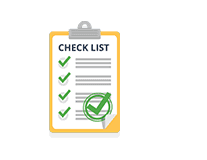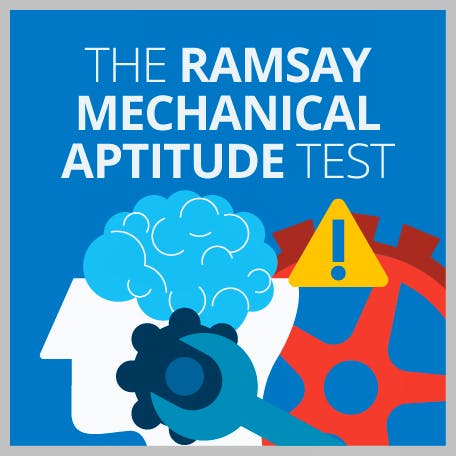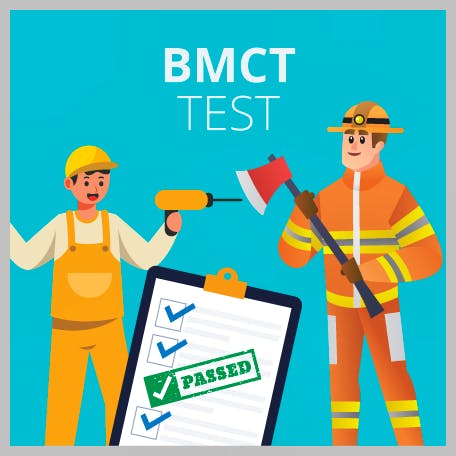Mechanical Aptitude Test: Preparation, Practice & Example Test Questions
Updated November 18, 2023

- What Is a Mechanical Reasoning Test?
- When Are Mechanical Reasoning Tests Used?
- Example Mechanical Reasoning Questions and Answers
empty
empty
empty
empty
empty
empty
empty
empty
- What to Expect From Mechanical Aptitude Tests
- How to Prepare for the Mechanical Reasoning Test
- Frequently Asked Questions
- Final Thoughts

A mechanical aptitude reasoning test is an important way to assess your knowledge on mechanical topics for potential roles in the army, emergency services and many other professions. Here, you will get all the information you need on what a mechanical comprehension test is and how to pass it.
Those applying for jobs related to the army, the emergency services engineering service, and similar occupations that require mechanical aptitude, are likely to be asked to take a mechanical reasoning test as part of the recruitment process.
Mechanical aptitude tests assess knowledge in electricity, optics, pressure and other fields of mechanics related to a specific industry.
From this article, you'll learn what mechanical reasoning tests look like, when to take them, what to expect from these assessment types, and how to practise and prepare for them.
Let’s get started!
What Is a Mechanical Reasoning Test?
A mechanical reasoning test or a mechanical aptitude test is an assessment that evaluates the knowledge and understanding of clear mechanical and physical concepts and visual and spatial relations in candidates applying for positions that require the knowledge of mechanics.
Depending on the field a candidate seeks employment in, the mechanical aptitude test can also assess the knowledge of tools.
Mechanical reasoning tests typically don't measure a candidate’s innate cognitive abilities.
However, they can be combined with cognitive reasoning skill tests as part of the recruitment process in the field that requires the use of both types of skills.
The level of performance on a test is determined by the previous knowledge of mechanical concepts such as:
- Gravity
- Levers
- Pulleys
- Gears
- Springs
- Electrical circuits
Other topics covered on a mechanical reasoning assessment include:
- Forces
- Pressure and sound energy
- Temperature and heat transfer
- Material properties
- Momentum and kinetic energy
- Fluid dynamics
A mechanical aptitude test also contains sections that assess the candidates' skills and understanding of how objects can be moved and organised in space.
When Are Mechanical Reasoning Tests Used?
Mechanical reasoning tests are often used by employers looking to hire candidates with a set level of skills.
While most tests are administered in entry-level jobs, some are mandated in other roles. Therefore, they can be expected at any level in a field that requires the use of mechanics in practice.
Besides measuring mechanical skills, these tests show the recruiter how an applicant follows directions and timelines.
They also require you to demonstrate your reading comprehension skills because these are necessary for understanding and resolving the questions correctly.
Employers use a mechanical aptitude test to narrow down their candidate pool and find the most qualified person for every position they offer. These candidates must have the skills needed for particular roles.
Example Mechanical Reasoning Questions and Answers
While there are plenty of online sources for mechanical reasoning tests, here, you'll be provided with a few representative mechanical reasoning examples to help you get a better picture of what the questions will look like on the real-life test.
Mechanical Reasoning Test Examples – Gears
A gear is a wheel that has teeth throughout the outer edge. The gear is the mechanism that makes clocks move.
When the teeth of two gears fit together and one gear turns, the other gear starts to turn as well, but in the other direction.
Also, you should expect if two gears are presented equal in size, they would have the same number of teeth. When they both move, they will be moving at exactly the same speed and making the same number or rotations.
However, if two gears are of different size yet moving at the same speed, you should expect the smaller gear to do more rotations.
Two gears may be connected directly by touching each other like in a watch or by means of a chain or belt, as in the case of the bicycle.
If two gears are connected by a chain or belt, then they move in the same direction. If the gears are touching (meshed), then adjacent gears move in opposite directions.
In the below figure, the first and third gear will turn in the same direction.
Remember, when there are an odd number of meshed gears, the last gear will always turn in the same direction as the first one.
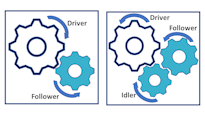

One gear is double the size of the other and makes half the number of revolutions.
The smaller gear makes 36 revolutions by the time the larger ones make 18.
If the smaller gear makes 56 revolutions, how many turns will the larger one make?
a) 24
b) 28
c) 26
d) 25
Mechanical Reasoning Test Examples – Pulleys
Pulleys consist of a grooved wheel and a block that holds it.
A rope runs in the groove around the wheel, and one end will be attached to either:
- A weight
- A fixed object such as the ceiling
- Another pulley
The questions that include pulleys require candidates to compute the forces required to move the weights.
In real life, friction between the rope and the wheel might slightly change the force, but for the purposes of the mechanical tests, these friction factors are ignored.
Questions on pulleys can come in varied complexity, including questions involving single, double or even multiple pulleys.
Assume friction is negligible, what mass is required for a second weight to move the 10 kg weight in the pulley system?
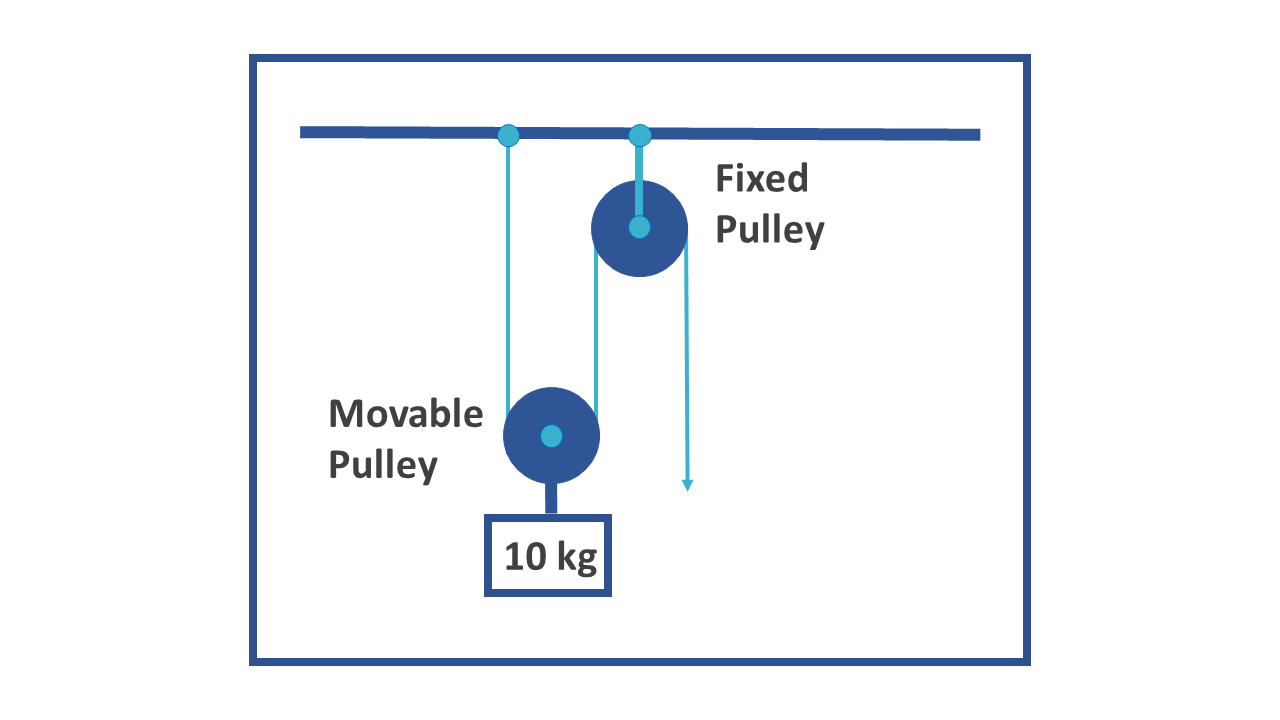
a) Anything above 2.5 kg
b) Anything above 5 kg
c) Anything above 7.5 kg
d) Anything above 10 kg
There are two pulleys with a weight attached to them. One is fixed, and the other one moves with the weight.
Which one do you think requires the most force to move?
a) The fixed pulley
b) The pulley that moves with the weight
c) They both require equal force to move
Mechanical Reasoning Examples – Springs
There are many different types of spring, including spiral coil, leaf springs and torsion springs, and they have several applications including clocks and car suspension systems.
For the sake of the mechanical aptitude assessment, you should expect to be asked questions about springs behaving in a linear fashion.
In other words, you should assume that doubling the fore applied to the springs will cause it to be compressed twice as much.
You can also expect questions asking about springs arranged in parallel or in series.
When arranged in series, the force applied impacts both springs equally. When arranged in parallel, the force applied gets divided equally between both springs.
This is called Hooke’s Law.
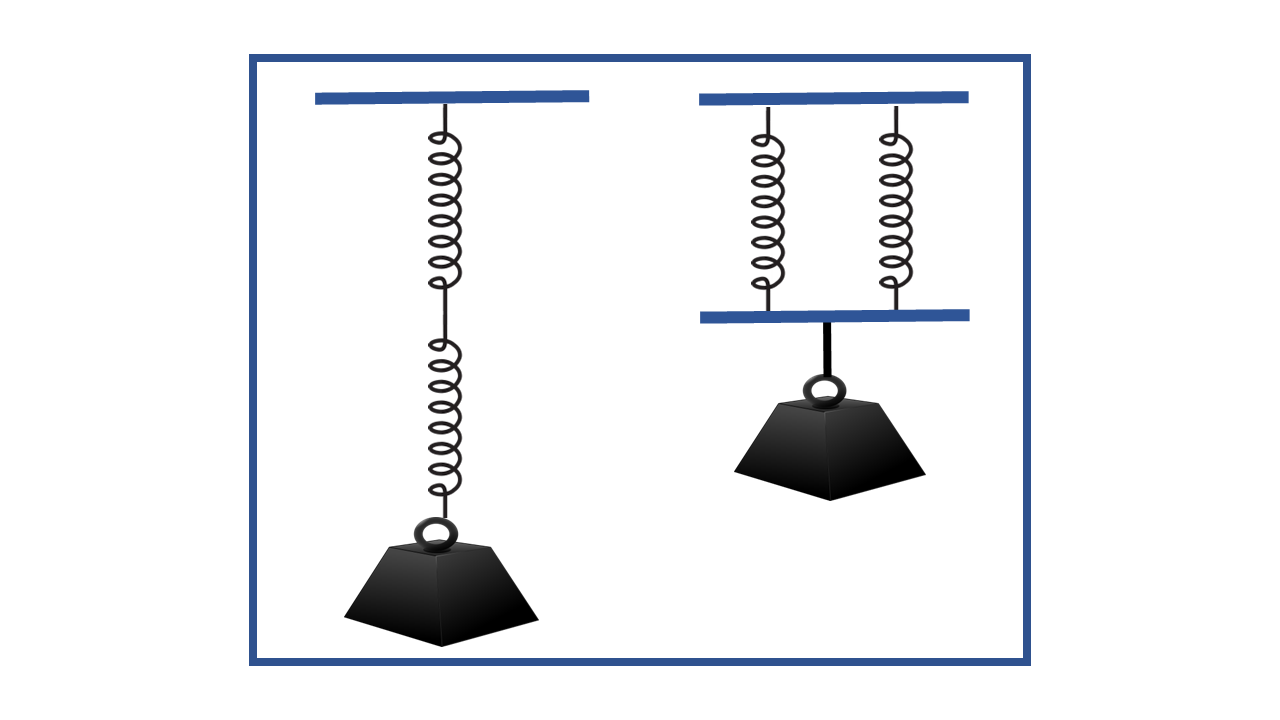
If a force of 2 kg compresses the springs in series by 15 cm, what will be the total distance the springs in parallel are compressed?
a) 10 cm
b) 2.5 cm
c) 5 cm
d) 7.5 cm
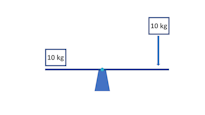
Accordingly, this lever is providing no mechanical benefit, and the force needed to lift the weight is equivalent to the weight itself.
However, if you want to lift a weight heavier than the force being applied, you will need to move the fulcrum closer to the weight you want to lift. The formula that regulates this relationship is as follows:
w x d1 = f x d2
Where:
w = weight
f = force needed
d1 = distance from fulcrum to weight
d2 = distance from fulcrum to point where force is applied
As illustrated below, when the fulcrum was shifted toward the weight so the weight is 1 meter from the fulcrum while the force being applied is 2 meters away from the fulcrum, the force is reduced by 50 percent.
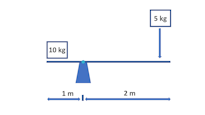
This has been calculated by rearranging the formula as below:
w x d1 = f x d2 can be rearranged to f = (w x d1)/d2
f = (10 x 1)/2 (10/2 is the same as 5/1, the force required is 5 kg)
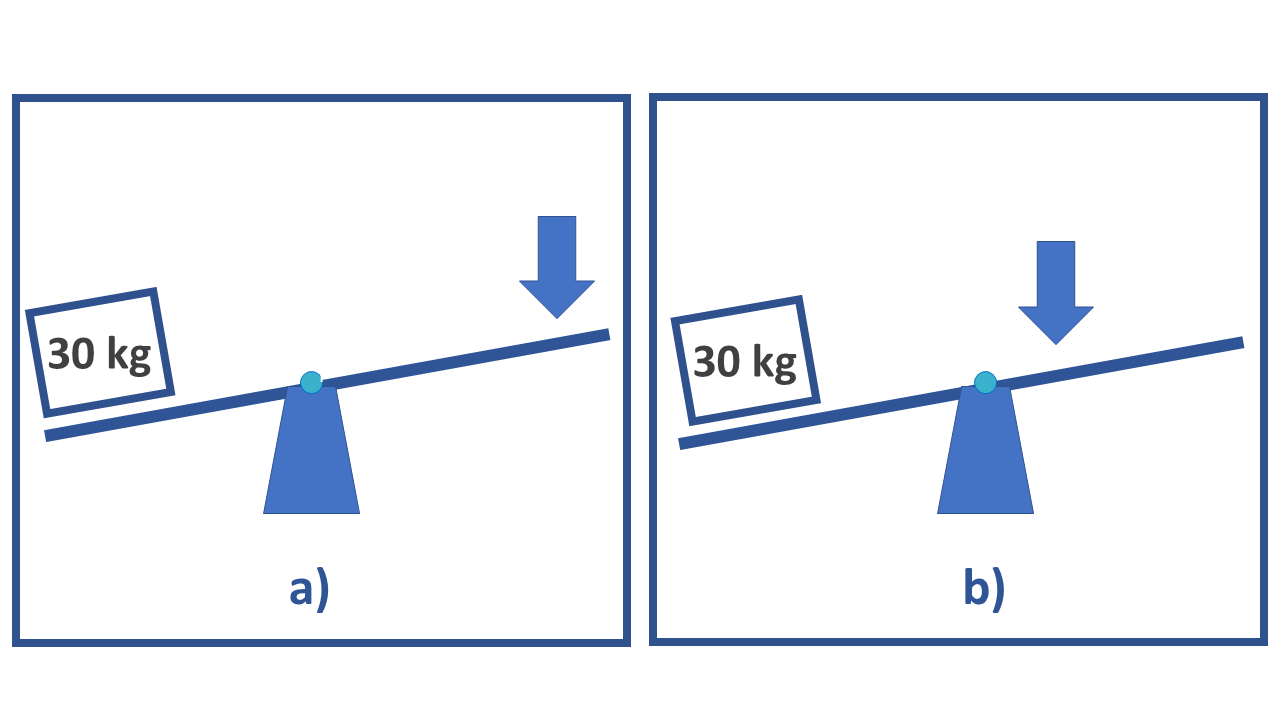
Which of the two levers will require more force to lift the weight?
a) The first lever
b) The second lever
c) They both require the same force
d) Cannot tell
How much force is required to lift the weights?
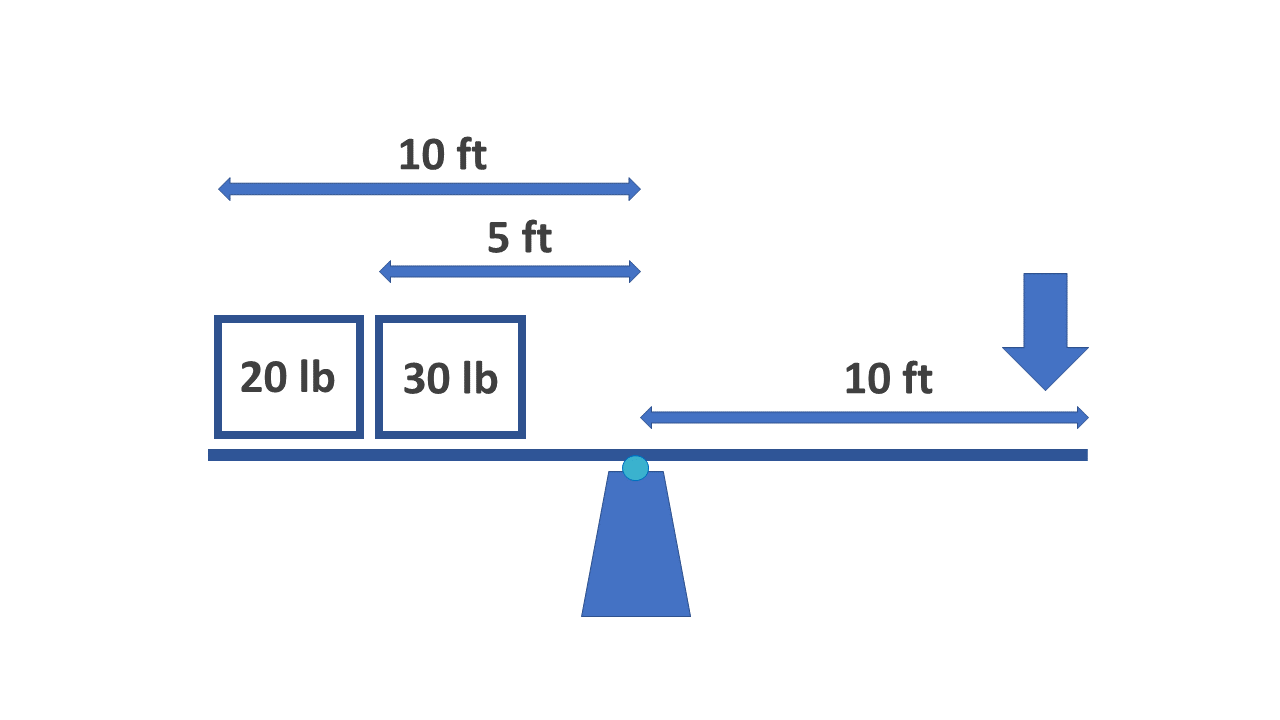
a) 25 lbs
b) 35 lbs
c) 40 lbs
d) 45 lbs
Let's say you're asked to buy fuel for a vehicle. If the vehicle has a fuel cylinder with a base of 6 inches and a height of 16 inches, how much fuel can you put in the cylinder?
a) 96 in3
b) 146 in3
c) 166 in3
d) 106 in3
You're asked to mark a perpendicular area around a structure that is 30 feet long by 40 feet wide.
How long will the perimeter of the marked area be?
a) 340 feet
b) 240 feet
c) 140 feet
d) 120 feet
You’re looking to buy a home with the following measurements:
36' in length by 22' in width.
How many square feet does this house have?
a) 792 square feet
b) 712 square feet
c) 780 square feet
d) 762 square feet
Mechanical Reasoning Examples – Circuits
Questions on electricity usually take the form of simple circuit diagrams.
These diagrams are usually limited to presenting the power source, switches, loads (usually bulbs) and the path of the wiring.
To answer the questions around simple circuits, you need a basic knowledge of how electricity flows around a circuit.

In a parallel circuit, if one of the light bulbs burns out, the rest of the bulbs will:
a) Also burn out
b) Won't have electricity to light up
c) Stop the flow of electricity
d) Still light up
Mechanical Reasoning Examples – Gravity
Gravity is the force by which a planet or other body draws objects toward its center, and it is an important concept that you must understand to be able to answer many mechanical aptitude assessment questions.
For mechanical reasoning tests, you only need to know a three key facts:
- Gravitational force is always downward.
- It creates resistance for any object moving upward
- The force of gravity applied on every object is the same, regardless of the object’s weight, size, shape, etc. and accordingly, any falling object that is moving only by the force of gravity (i.e. in free fall situation) will move at the same rate toward a resting point.
Questions on gravity in mechanical aptitude assessments don’t usually ask about the rate of falling, but rather evaluate your understanding about those three concepts.

Assuming the two balls are falling from the same height, which will hit the ground first?
a) Ball 1
b) Ball 2
c) They will hit the ground at the same time
d) Impossible to tell
If you need to prepare for a number of different employment tests and want to outsmart the competition, choose a Premium Membership from JobTestPrep.
You will get access to three PrepPacks of your choice, from a database that covers all the major test providers and employers and tailored profession packs.
What to Expect From Mechanical Aptitude Tests
While there are both computer- and paper-based mechanical aptitude tests, most of these assessments are computer-based tests. These can be taken from the candidate’s home, or they can be taken at a test centre.
Paper-based tests are taken solely at job recruitment or testing centres. They have a series of questions with multiple-choice answers to choose from.
Mechanical aptitude tests are typically timed. There are different timings (depending on the employers' requirements and the developers' recommendations), and the test often allows only 30 to 50 seconds to complete each question.
When used for applying for the emergency services and the military, mechanical reasoning tests often focus more on concepts and principles instead of computations and calculations. For example, instead of mathematical problems, you'll be presented with levers and asked to determine which is more efficient.
However, if you're applying for craft or technical roles, you will likely be asked to do calculations.
For example, you might be required to calculate the forces needed to move a lever, rather than determine its efficiency.
In this case, understanding the concept of levers won’t be enough. You’ll also need to know the mathematical formula that helps you resolve the proposed issue.
How to Prepare for the Mechanical Reasoning Test
When it comes to preparing for mechanical aptitude tests, there are some things you can do to improve your chances of success. Here are some suggestions.
Step 1. Practice
Answering mechanical aptitude practice tests is essential for successfully passing mechanical assessments.
There are numerous mechanical aptitude practice tests available online, both free and premium. The latter can be a sound investment into your future career, as they often come with more detailed explanations for coming up with the correct solution.
Because when practising, you'll need to look at what the paper marks as the solution and how they got there.
This will help you familiarise yourself with the basic thought process you'll need to use during the real-time test.
Step 2. Revise Common Mechanical Principles
Before you start trying online mechanical aptitude practice tests, brush up on basic mechanical principles and formulas you've learned in school.
A few of the most common principles applied to these tests are gears, levers, springs, pulleys, electrical circuits and forces.
You can get material for this online or from a mechanics book. You can also look into other educational options, such as tutoring.
Step 3. Learn Your Formulas
Remembering key formulae can help you to solve problems more quickly and accurately during a mechanical aptitude test.
However, it is also important to practice applying these formulae to different types of problems so that you can become more familiar with their use.
Here are some important formulae that you should remember for a mechanical reasoning test:
-
Force = Mass x Acceleration (F = m x a) – This formula describes the relationship between force, mass, and acceleration, and is often used in calculations related to motion and Newton's Laws.
-
Work = Force x Distance (W = F x d) – This formula describes the relationship between work, force, and distance, and is often used in calculations related to mechanical systems.
-
Power = Work / Time (P = W / t) – This formula describes the relationship between power, work, and time, and is often used in calculations related to energy and power.
-
Torque = Force x Lever Arm (T = F x r) – This formula describes the relationship between torque, force, and lever arm, and is often used in calculations related to rotational motion.
-
Pressure = Force / Area (P = F / A) – This formula describes the relationship between pressure, force, and area, and is often used in calculations related to fluid mechanics.
-
Energy = Mass x Gravity x Height (E = mgh) – This formula describes the relationship between energy, mass, gravity, and height, and is often used in calculations related to potential energy.
Step 4. Check Your Equipment
Numerous mechanical reasoning tests are taken at home on a computer or other mobile device – although candidates are usually advised against using mobile phones, as these raise the risks of making mistakes.
If you're taking an online mechanical aptitude test, you'll need to ensure your PC or laptop, internet connection and any other piece of technical equipment you need are all working correctly.
There is nothing worse than not being able to finish such an important test due to technical difficulties.
It could make all the time and effort you invested in preparing for the test go to waste. Some recruiters will allow you to retake the test if you can prove that you had technical issues, but not all of them will be so generous.
Step 5. Prepare Your Test Environment
If you're taking a computer-based test at home, you'll also need to ensure that you have a location that is fit for this purpose. This should be a quiet place with no distractions.
If you live alone, prepare your space by turning off electrical devices, closing windows and moving pets that could distract you.
If you live with others, advise them that you'll be taking an important test, and they should not disturb you during the time it takes to finish the assessment. Take the mechanical comprehension test in your room or anywhere away from high-traffic areas.
Step 6. Take Care of Your Wellbeing
Testing when hungry, thirsty or tired can reduce performance. Have a nutritionally balanced meal two to three hours before testing to ensure you have the optimal level of mental energy and won't be distracted by hunger cues.
Stay hydrated by drinking plenty of water and avoiding too much caffeine or alcohol on the day of the assessment, as this will raise your concentration. Have at least seven hours of sleep the night before your mechanical aptitude test.
And, to maximise your chances for good performance and focus, lead a healthy lifestyle with a good diet and adequate exercise.
Step 7. Practise Timings with a Mechanical Aptitude Practice Test Online
Most mechanical reasoning tests are timed, so candidates should practise speeding up their time when answering questions.
You can start by finishing your mechanical aptitude practice test within the time frame you're comfortable with without rushing.
Once you've mastered answering the questions accurately within this time frame, you can reduce the time and aim to answer the question within that time frame. Repeat until you reach the time limit of the real test (typically 30 to 60 seconds per question).
Step 8. Practise Strategy
Most mechanical aptitude tests don’t mark wrong or unanswered questions, so you won't get a negative score for them.
Therefore, it can sometimes be a good idea to answer all the quick and easy questions right away.
Once these are out of the way, you can return to some of the most challenging questions and spend more time on them. For instance, if a 50-question assessment has an average of 50 seconds per question, you can spend 30 seconds per question answering the 30 questions you can resolve swiftly.
This way, you'll have 80 seconds per question to find mechanical reasoning test answers to the remaining 20 challenging questions.
A mechanical reasoning test is crucial for aptitude evaluations for roles that require mechanical comprehension. Employees use this test to assess how well candidates apply mechanical skills and reasoning in practice in a specific work environment.
Mechanical reasoning tests are designed to be challenging. A field that requires mechanical reasoning tests usually offers high-responsibility jobs. Employers want to ensure they hire candidates with the best aptitudes in the industry.
Besides requiring formulas and principles from various mechanical sections, most tests also have a strict time limit. This puts an added layer of pressure on candidates. However, this is also necessary, as their work environment can often be stressful.
You can prepare for mechanical reasoning tests in the comfort of your home by practising online tests. These will help you familiarise yourself with the test format and question types you'll be required to answer on the real test.
Look at which mechanical reasoning tests are required by the company you're applying to and start practising with these. It’s also a great idea to find a mechanical reasoning study guide to help you revise for the test.
Most employers require a minimum passing score of 70% to 80%. However, your scores will be compared to the results of the other candidates.
The higher your score, the higher your position will be on the candidacy list, so you should aim to obtain as high a score as possible (preferably in the top 10%).
Whether you can retake a mechanical reasoning assessment depends on the employer’s criteria. Some companies will allow applicants who haven't achieved a passing score on their first attempt to retake the test.
Others will focus on high-scoring candidates and won't let you resit the test. However, you might have a chance with other employers if they require the same test and allow resits.
The mechanical reasoning is to assess candidates' aptitude in mechanical-related fields, such as electricity, pressure or optics.
In the test provided by a particular employer, candidates are expected to have knowledge of the principles and formulas that they’ll use in the role they'll be occupying at the company.
The candidates' answers to these questions are an excellent predictor of how they will later perform at work in that particular field.
You can find more sample mechanical reasoning questions online. Look for websites offering free or paid samples for these types of tests and search for the particular tests the potential employers are using.
JobTestPrep offers a free mechanical reasoning test or paid practice tests for mechanical reasoning skills.
Here, you’ll be able to check out many mechanical reasoning test questions and answers.
Most mechanical reasoning tests have strict time limitations. You'll typically have 30 to 60 seconds per question. The allocated time frame depends on the employer's requirements and the test developers' recommendations.
You'll need to hone your time management skills, while practising with the sample tests to ensure you can resolve the questions quickly and accurately.
Most mechanical reasoning tests have 20 or more questions, but the average number of questions is 30. The questions cover different fields, and each field has several (usually multiple-choice) questions testing specific mechanical reasoning abilities.
This depends on the individual employer/recruiter. Some will only notify you about passing the mechanical reasoning test by inviting you to a job interview several weeks later. Others will send an email or call you two to four weeks after testing to discuss the future steps in the recruitment process.
You'll need to enquire with the potential employers/recruiters about their mechanical reasoning test policy. Some recruiters use computer-based tests, while others use paper-based tests. The former can be taken at a testing or job recruitment centre, or at a candidate's home. Paper-based tests must be completed in testing centres.
You can find a complete mechanical reasoning study guide on most sites that offer practice questions. Look for websites with an in-depth explanation of each mechanical principle you need to brush up on and tips on preparing and acing a mechanical reasoning test. With these, you’ll have a better idea of what mechanical reasoning test questions and answers are like.
You can also enquire about a mechanical reasoning study guide for this type of assessment in job recruitment centres, with test developers and on online forums related to the field you're applying for.
Final Thoughts
Mechanical aptitude tests are a recruitment tool used in specific careers. Since these tests are designed to be challenging, it takes considerable time and practice to ensure the best possible performance on this assessment.
Answering mechanical aptitude practice tests online will help you become more adept at answering questions quickly and accurately, allowing you to score well and land your dream job.
Brushing up on mechanical principles and formulas is also a good idea, as is honing your time management skills, as most mechanical aptitude tests are timed.









